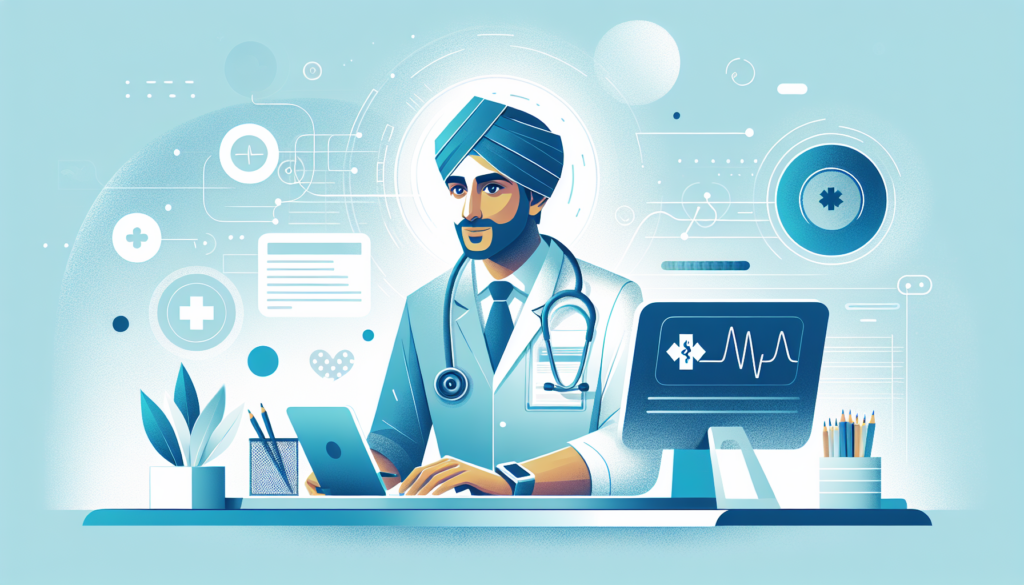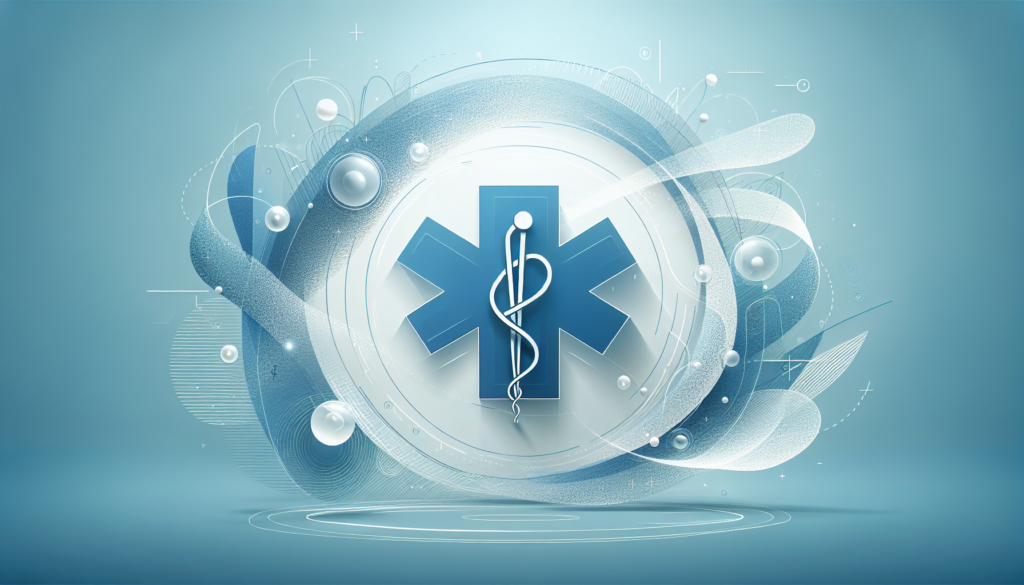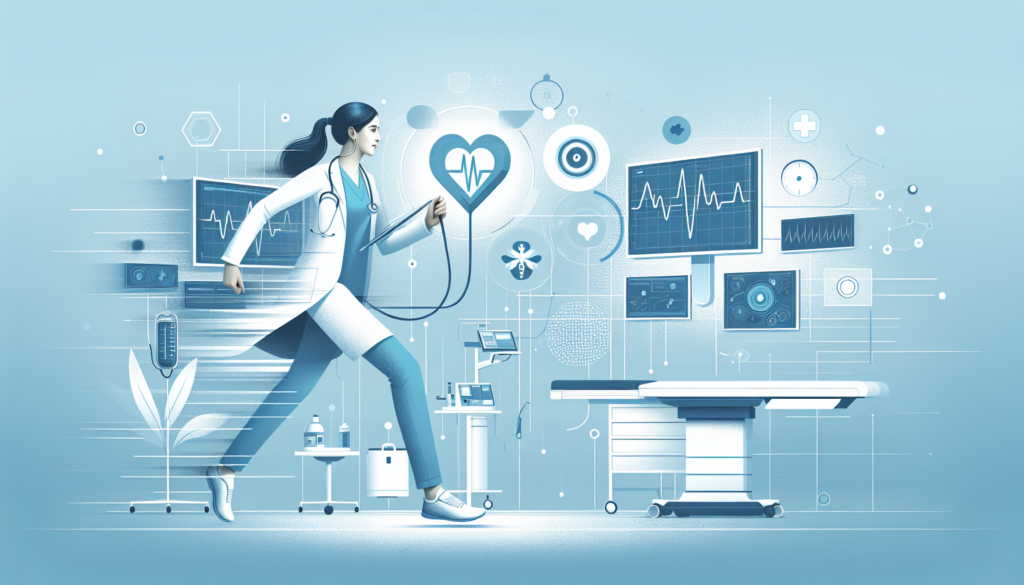Understanding the Importance of a Medical Dictionary Book
Within the realm of healthcare, communication is a cornerstone. A medical dictionary book is an essential resource that serves as the backbone for accurate and clear communication among medical professionals. Ensuring that terms are understood and used correctly is paramount to maintaining quality patient care and precise documentation of conditions and treatments. This is particularly vital for medical scribes, such as those leveraging the AI-powered digital scribe service, who must accurately transcribe and understand complex medical terminology.
A comprehensive medical dictionary provides definitions and pronunciations for the myriad of terms and phrases encountered in the medical field. This accessibility to a trusted source of medical vocabulary supports non-native English speakers and students who are in the process of mastering medical terminology, as well as seasoned professionals who may need to clarify unfamiliar terms.
Here are a few key uses of a medical dictionary book in clinical settings:
– **Ensuring accuracy**: It helps in verifying the correct spelling and meaning of complex terms.
– **Learning resource**: Serves as an educational tool for continuous learning.
– **Prevents miscommunication**: By providing a standardized language.
The constant evolution of medicine with new treatments, technologies, and research also introduces fresh terminology. A medical dictionary book is frequently updated to reflect these changes, facilitating up-to-date knowledge that is crucial for all medical personnel. With AI-powered tools integrating into healthcare, these dictionaries can also serve to enhance the algorithm’s understanding of evolving language, taking the load off practitioners to keep pace with new developments.
In addition, the use of a medical dictionary book aligns perfectly with the goals of digital scribe technology. The integration of accurate, specialized medical terminology is necessary for technology like AI-powered digital scribes to effectively listen, comprehend, and produce medical documentation. This continuous learning loop is essential for maintaining the high accuracy rate and rapid response time touted by innovative platforms like Scribemd.ai.
Benefits of a medical dictionary for AI-driven digital scribe services include:
– **Enhanced accuracy**: Informing AI language models with correct medical terms.
– **Language model training**: Assisting in training and updating AI systems to understand medical jargon.
– **Assurance of clarity**: Guaranteeing the clear and concise documentation that medical professionals can rely on.
A medical dictionary book is an invaluable asset to clinicians, students, and medical scribes – be it human or AI. It forms the bedrock for the clarity and precision required in the high-stakes environment of healthcare. Ensuring that AI technology stays abreast of the latest terminology is critical to its success and, by extension, to the healthcare providers relying on it for efficient and precise documentation.
Digital Evolution: How AI is Enhancing Traditional Medical Dictionaries
The medical profession is steeped in a rich lexicon that can be as complex as the physiological systems it describes. Traditional medical dictionaries have long been a staple resource for healthcare professionals, grounding them in the necessary language to accurately diagnose and treat patients. However, the digital evolution is now taking these foundational tools to new heights. Artificial Intelligence (AI) is not only enhancing the way medical professionals access and engage with medical terminology but is also revolutionizing the scope and functionality of medical dictionaries themselves.
By integrating AI and machine learning algorithms into medical dictionaries, the information becomes more dynamic and adaptable to the changing landscape of healthcare. These enhanced tools can now offer context-aware suggestions and decipher abbreviations and misspellings, reducing the time clinicians spend searching for terms. This immediacy and accessibility are crucial in a fast-paced medical environment where every second count.
– **Dynamic Updates**: AI-driven dictionaries can update in real-time, reflecting the latest medical research and terminologies.
– **Context-Aware Suggestions**: Smart dictionaries provide more accurate results based on the context of the query.
– **Error Correction**: Advanced algorithms correct common misspellings and understand medical abbreviations for a smoother search experience.
The implementation of AI in medical dictionaries provides a bridge between the vast, ever-growing volumes of medical literature and the daily practice of healthcare professionals. Through Natural Language Processing (NLP), AI systems are able to comprehend complex medical jargon and provide clear, concise definitions and explanations. This is an indispensable asset for medical education, where students grapple with the intricacies of medical nomenclature, and for practitioners who need to stay abreast of the latest medical knowledge without getting bogged down by the details.
– **Natural Language Processing**: AI deciphers the complex medical language for clearer understanding.
– **Medical Education**: Students benefit from AI-powered dictionaries for learning and retention.
– **Staying Current**: Practitioners can access the most recent medical knowledge with AI’s help.
Moreover, AI-enhanced medical dictionaries present a pioneering shift in multilingual medical communication. With instant translation features powered by cutting-edge language models, doctors and patients who speak different languages can find common ground more easily. This not only strengthens the quality of care but also broadens the reach of medical services across linguistic barriers, paving the way for a more inclusive healthcare landscape.
– **Instant Translation**: Provides immediate translations of medical terms in multiple languages.
– **Improved Patient Care**: Enhances communication between doctors and patients of diverse linguistic backgrounds.
– **Inclusivity in Healthcare**: Expands the accessibility of medical services to non-native speakers.
Key Features to Look for in a Medical Dictionary Book
When selecting a medical dictionary book, it’s crucial to consider the features that will most effectively support medical professionals in their work. Given the complexity and ever-evolving nature of medical terminologies, a comprehensive and up-to-date resource is indispensable. One of the key features to look for is the breadth of coverage. A good medical dictionary should encompass a wide range of terms from various medical fields, ensuring that practitioners can find definitions and explanations for all the terms they encounter in their practice.
– **Comprehensiveness**: Covering a vast array of medical terms.
– **Currency**: Including the latest terminology in the medical field.
– **Specializations**: Featured content from varied medical specialties.
Accuracy and Clarity
Accuracy of information is non-negotiable when it comes to medical references. Definitions should not only be medically accurate, but also clearly written to facilitate understanding. Clarity is particularly important for those new to the medical field, like students or non-specialist healthcare providers who may be unfamiliar with complex medical jargon. Additionally, the dictionary should ideally include pronunciation guides to aid in the correct vocalization of terms, which is essential for effective communication within the medical community.
– **Clear Definitions**: Easily understandable explanations.
– **Pronunciation Guides**: Help with the correct vocalization of terms.
– **Precise Information**: Ensuring medical accuracy in definitions.
Usability and Accessibility
The physical design of a medical dictionary can greatly affect its usability. Look for books with a user-friendly layout, featuring clear headings, a clean typeface, and perhaps even color-coded sections for quick reference. Another helpful feature is the inclusion of thumb indexes, which allow users to quickly flip to the relevant portion of the book. Considering that the medical profession involves rapid decision-making and swift information retrieval, these design elements can significantly enhance a medical dictionary’s practicality.
– **User-Friendly Layout**: Clear headings and clean typefaces.
– **Design Elements**: Thumb indexes for quick navigation.
– **Color-Coded Sections**: For faster reference to different medical fields.
Lastly, advances in digital technology suggest considering whether there’s a complementary electronic version or app available. Access to a digital companion can increase the dictionary’s accessibility, allowing practitioners to look up terms on-the-go. This aligns with solutions such as ScribeMD’s AI-powered digital scribe, which leverage technology to save time and enhance medical practice. Being able to quickly reference a digital medical dictionary can be a valuable supplement to the sophisticated assistance provided by such platforms.
– **Digital Companion**: Availability of an electronic version or mobile app.
– **On-the-Go Reference**: Enables quick access to information.
Using a Medical Dictionary Book Effectively in Medical Practice
In the ever-evolving landscape of healthcare, medical dictionaries remain a crucial resource for medical professionals. These books are more than just compendiums of medical terms; they are vital tools for ensuring accurate communication and understanding within the medical field. To use a medical dictionary book effectively, it’s important for healthcare providers to integrate it into their daily practice seamlessly. This can be a challenge, however, given the demands on their time.
Utilizing a medical dictionary book extensively can help in several key areas. Firstly, it aids in deciphering the meaning of complex medical terminology, which is essential when diagnosing conditions or explaining them to patients. Additionally, these dictionaries often include illustrations, which can be valuable for understanding the anatomy, procedures, or conditions being discussed. Another often overlooked utility is the clarification of pronunciation, helping to maintain professionalism and confidence in patient interactions.
– **Benefits of using a medical dictionary in practice:**
– Deciphering complex medical terminology
– Providing visual aids through illustrations
– Clarification of correct term pronunciation
Keeping Updated with Medical Terminology
Given the dynamic nature of medical science, with new discoveries and techniques emerging constantly, it’s vital for healthcare professionals to stay updated with the latest terms and definitions. A current medical dictionary reflects these changes and helps ensure that a practice’s clinical documentation stays accurate and up-to-date. In this respect, a medical dictionary is not just a reference tool but also an educational resource. Regularly consulting the latest editions can contribute to continuous learning and professional development, two critical components of a thriving medical practice.
– **Advantages of updated medical dictionaries:**
– Reflection of the latest medical terminologies and definitions
– Ensuring accuracy in clinical documentation
– Serving as an educational resource for continuous learning
[aib_post_related url=’/is-imessage-hipaa-compliant/’ title=’Is iMessage HIPAA Compliant? Exploring Text Security for Healthcare’ relatedtext=’You may also be interested in:’]
Strategies for Effective Usage
To make the most out of a medical dictionary, healthcare providers should develop strategies for efficient usage. One such approach is to keep the dictionary accessible—physically or digitally—so that looking up terms can be done without interrupting the workflow significantly. Another strategy involves using the medical dictionary as a teaching tool during patient consults. Explaining terms using clear definitions can enhance patient understanding and engagement, leading to better health outcomes. For non-native English speakers, it can also serve as a vital bridge in comprehending and using medical vocabulary appropriately in different contexts.
– **Strategies for making a medical dictionary more effective:**
– Keeping the guide readily accessible
– Using it as a teaching tool during consultations
– Bridging language barriers for non-native English-speaking professionals
By employing these methods, medical professionals can enhance the quality of patient care and improve the efficiency of their practice. Keeping in mind the importance of staying current and making medical knowledge accessible, a medical dictionary can serve as a cornerstone for medical communication and continuous learning.[aib_post_related url=’/what-is-a-medical-language-specialist/’ title=’Medical Language Specialist Explained: Roles and Expertise’ relatedtext=’You may also be interested in:’]
Comparing Top Medical Dictionary Books and Digital Alternatives
When it comes to medical dictionaries, healthcare professionals have relied on trusted books for decades. Renowned titles such as Taber’s Cyclopedic Medical Dictionary and Stedman’s Medical Dictionary have been staples in clinics and hospitals, providing comprehensive and detailed medical terminologies. The information contained within these pages serves as a crucial reference for healthcare practitioners seeking to clarify terms, understand complex concepts, and ensure the accuracy of their communication.
However, the rise of digital medical dictionaries has begun to shift the landscape. Online platforms and apps like Merriam-Webster’s Medical Dictionary and MedlinePlus offer quick, searchable access to medical terms and definitions. These electronic resources often come with additional features such as audio pronunciations, frequently updated content, and cross-referencing capabilities.
– **Traditional Medical Dictionary Books**
– Taber’s Cyclopedic Medical Dictionary
– Stedman’s Medical Dictionary
– Mosby’s Medical Dictionary
– **Digital Medical Dictionary Alternatives**
– Merriam-Webster’s Medical Dictionary Online
– MedlinePlus Medical Dictionary
– FreeDictionary’s Medical Dictionary
The advantages of using digital alternatives are becoming increasingly apparent. The ability to swiftly search for terms can save precious time in a busy healthcare setting. Furthermore, digital resources are constantly updated, ensuring that users have access to the latest medical terminology and advancements in the field. Interactivity is another key benefit, as many digital dictionaries are integrated into broader electronic health record systems, facilitating a smoother workflow for medical professionals.
While the tactile appeal of leafing through a well-worn dictionary may still hold charm for some, the efficiency and interconnectivity offered by digital alternatives are aligning more closely with the needs of modern healthcare. As the medical industry moves further into the digital age, tools that streamline information access are critical. A service like Scribemd.ai, which combines the proficiency of AI-powered digital scribing with immediate access to medical terminology, exemplifies the synergy between healthcare and technological advancement.
– **Advantages of Digital Medical Dictionaries**
– Faster search capabilities
– Regularly updated content
– Integration with electronic health record systems
– **The Role of AI in Modern Medical Terminology Tools**
– Streamlined access to information
– Synergy with digital note-taking platforms
– Enhanced workflow efficiency for healthcare professionals
In conclusion, while traditional medical dictionary books have played a foundational role in the education and practice of medical professionals, digital dictionaries and platforms like Scribemd.ai are gaining prominence due to their adaptability and the enhanced productivity they offer. As medical practices evolve, so too must the tools they use; in this regard, digital resources are paving the way for a more efficient and informed future in healthcare.
– **Traditional vs. Digital Medical Resources**
– Traditional: Physical books, tactile experience, static content
– Digital: Searchable databases, dynamic updates, interactive features



